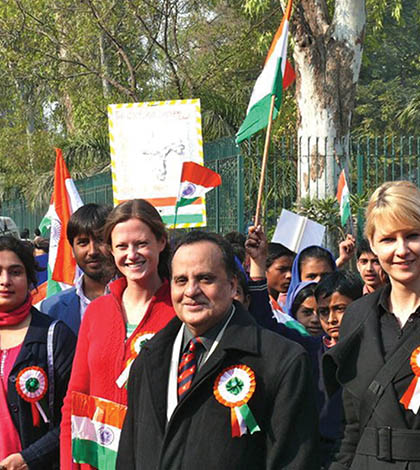 The principal inspiration behind establishing the Oxford Square was Prophet Mohammad’s saying that ‘the best among you is the one who learns or teaches’. Today, it is among the few educational institutions in India that exclusively cater to the needs of slum-dwellers, writes Sapna Srivastav
The principal inspiration behind establishing the Oxford Square was Prophet Mohammad’s saying that ‘the best among you is the one who learns or teaches’. Today, it is among the few educational institutions in India that exclusively cater to the needs of slum-dwellers, writes Sapna Srivastav
The founder of the Oxford Square has a unique philosophy: Charging money for imparting education is unethical. One must share one’s knowledge with others without remuneration. It is with this vision that in the last seven years of its existence, the Ox- 70 August 2014 / digitalLEARNING ford Square has not charged a single penny from any student. The school is financed by the founder president’s fam ily and friends.
Established in 2007 in Jamia Nagar in the heart of the national capital, this unique institution was set up by Syed Qaisar Mahmood, an Arabist, an ex-advisor in the Gulf and a former president of the students’ union of the Aligarh Muslim University. Before the institution came into being, hundreds of street children could be seen moving around in the Jamia Nagar area. Families living in slums were sending their children with containers to fetch water. The founder visited the cottages on March 24, 2007 and was shocked to find how the lack of adequate sanitation, scarcity of water, heaps of garbage on the roads and rampant poverty had made the slum-dwellers’ life miserable. To top it all, children never went to school.
The founder met the parents and encouraged them to send their children to The Oxford Square for free education. Today, the situation is different. From 46 students on March 25, 2007, the number of students has gone up to 675 in 2014, with 41 per cent of the total strength constituting of girls. In further impetus to promoting girls’ education, all the girls studying in classes VI, VIII and X have been provided with bicycles by the school. The school currently has classes I to XI, and the curriculum followed is that of the CBSE. Most class rooms are fitted with largesized television sets and air conditioners.
When asked about the challenges faced by the management while setting up the institution, the founder Syed Qaisar Mahmood begins with quoting Prophet Mohammad who spoke of ‘the limitless horizons of human potential that could take one to the celestial spheres’. In contrast, he says, “The community’s limited horizons of human potential are characterised by miracle-mongering, commercialisation of tombs and running after the dead for the fulfillment of one’s dreams and luxurious marriages.” He says the school has encouraged parents to shed all superstitions and send their children to the school for free education. The school today provides its students with summer and winter uniforms, textbooks, stationery and, above all, a highclass faculty- all free of cost.
The qualified faculty includes a number of foreigners. Jennifer Star, a Ph. D. in Education from Deakin University, Australia, teaches English language. Edward Harway, Manfred Lai and Peter, holders of top degrees from western universities, work hard to ensure that the students excel in English conversation. While Sapna Srivastav and Siddhartha Sankara Sahu, postgraduates in Mathematics, teach Arithmetic, Algebra and Geometry, Neetu Bhardwaj helps the students learn art, craft and Sanskrit. Mohammad Islam Sarvar and Mohammad Qassim help with learning Moral Science and Urdu, Annu Garg teaches grammar and Rao Masroor, a post-graduate in Hindi, teaches Hindi poetry and prose. The school’s Information Technology Laboratory has 13 sophisticated computers used to impart high-class IT education to the students of higher classes.
“The community’s limited horizons of human potential are characterised by miracle- mongering, commercialisation of tombs and running after the dead for the fulfillment of one’s dreams and luxurious marriages”
There are more ways that this school is unique. Since its inception, the founder has stressed upon admitting students who are the least talented and do not manage to get into any other school. The focus, therefore lies on developing and promoting talent in those who have been less privileged. The students here are not only provided with quality education but also encouraged to develop aspirations and are guided towards achieving these aspirations. All students of The Oxford Square are prepared from day one to appear in the All India Services Examination conducted by the Union Public Service Commission. The institution helps students in all possible ways till they become IAS, IPS, IRS or IFS officers. From time to time, senior students are also offered counseling on a career in civil services.
There are eight subjects taught at the Oxford Square. The technical subjects include Mathematics, Social Sciences, Environmental Studies, General Knowledge and Moral Science. The languages taught are English, Hindi, Urdu, German, Sanskrit and Modern Arabic. However, the main emphasis is on learning the English language, the beautiful language of Shakespeare. All the 676 students of this school have to learn how to speak flawless Queen’s English.
When asked about the problems of education in our country, the school’s quintessential Chairman said: “India has a huge number of highly qualified teachers. But, for every teacher who wants to teach, there are a thousand students who do not want to learn. Students want that the school should not mind if they are late, disappear, do not do homework or disturb the class.” To counter this, the school follows a unique policy to ensure full attendance. The administrator Rakesh Kumar calls the parents at 5 a.m. asking them to wake the children up and send them to the school immediately. The Oxford Square is probably the only public school in India which opens at 6 a.m. every day. The first period is marked for sports where all students go out for jogging, cycling and physical exercises. The school provides the students with free sports equipment and tells them that they must not start their studies unless they have played soccer, cricket or badminton. The sports policy has reduced the level of drop out remarkably.



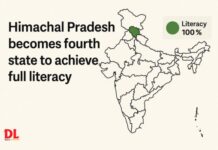
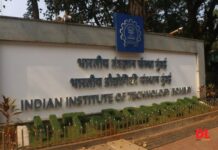

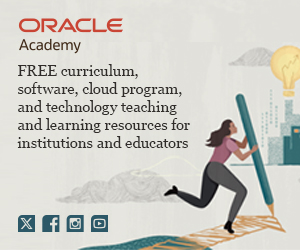

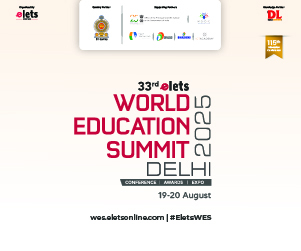


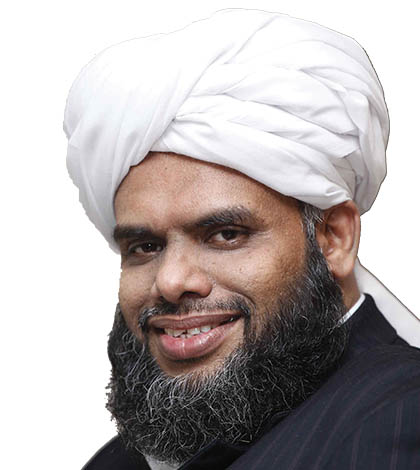
 Among the top most influential Muslim figures on ‘The Muslim 500’, Sayyid Ibrahimul Khalilul Bukhari, founder of Ma’din Academy, wears many hats and is sought after by several governments across the globe. In an interview to ENN, Bukhari says he strongly believes that education is a powerful way to transform lives and a means to end inequalities suffered by minorities. Excerpts from an interview
Among the top most influential Muslim figures on ‘The Muslim 500’, Sayyid Ibrahimul Khalilul Bukhari, founder of Ma’din Academy, wears many hats and is sought after by several governments across the globe. In an interview to ENN, Bukhari says he strongly believes that education is a powerful way to transform lives and a means to end inequalities suffered by minorities. Excerpts from an interview
 In the last eight decades since its inception in 1927, the Konkan Muslim Education Society has spread its sphere of operations from one Anglo-Urdu high school to several educational institutions, including G M Momin Women’s College in Bhiwandi. In an interaction with ENN, Aslam Fakih, President of the K M E Society says the government needs to create a better ecosystem for minority educational institutions to help build a better India. Excerpts from the interview
In the last eight decades since its inception in 1927, the Konkan Muslim Education Society has spread its sphere of operations from one Anglo-Urdu high school to several educational institutions, including G M Momin Women’s College in Bhiwandi. In an interaction with ENN, Aslam Fakih, President of the K M E Society says the government needs to create a better ecosystem for minority educational institutions to help build a better India. Excerpts from the interview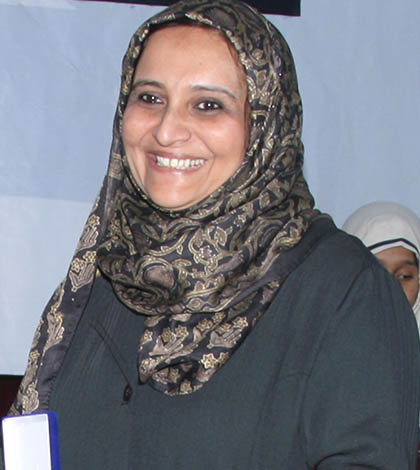
 Oasis International School, an educational initiative by a group of Muslim women in Bangalore, believes that imparting quality education will result in leaders guided by justice and informed by reason, writes Ayesha Masood
Oasis International School, an educational initiative by a group of Muslim women in Bangalore, believes that imparting quality education will result in leaders guided by justice and informed by reason, writes Ayesha Masood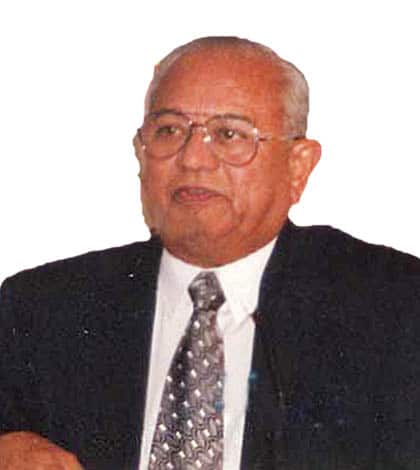
 With the inspiration that education is not just the government’s priority, but a subject of people’s initiative, Dr Nakadar Institute of Knowledge in Nandasan, Gujarat, was established in 2004 to play an integral role in the development of an economically healthy country. An ENN report
With the inspiration that education is not just the government’s priority, but a subject of people’s initiative, Dr Nakadar Institute of Knowledge in Nandasan, Gujarat, was established in 2004 to play an integral role in the development of an economically healthy country. An ENN report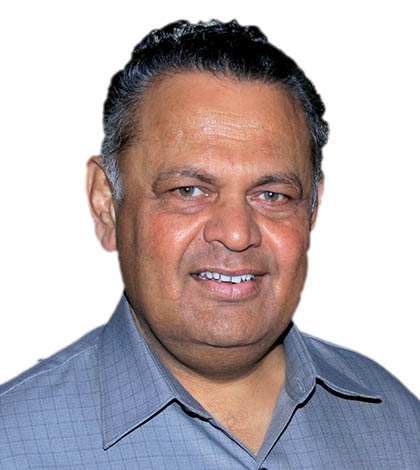
 From four schools in 1992 to 29 educational institutes, 1,100 teaching and 700 non-teaching staff with 27,000 students at the end of the 2013 academic year, it has been no ordinary journey for the Maharashtra Cosmopolitan Education Society (MCES)
From four schools in 1992 to 29 educational institutes, 1,100 teaching and 700 non-teaching staff with 27,000 students at the end of the 2013 academic year, it has been no ordinary journey for the Maharashtra Cosmopolitan Education Society (MCES)
 From being termed a fly-by-night operator to being accused of corrupting the minds of Muslims, Wahed Chowhan heard it all. However, societal opposition could not dither his resolve to educate the girl child in Sikar, Rajasthan. An ENN report
From being termed a fly-by-night operator to being accused of corrupting the minds of Muslims, Wahed Chowhan heard it all. However, societal opposition could not dither his resolve to educate the girl child in Sikar, Rajasthan. An ENN report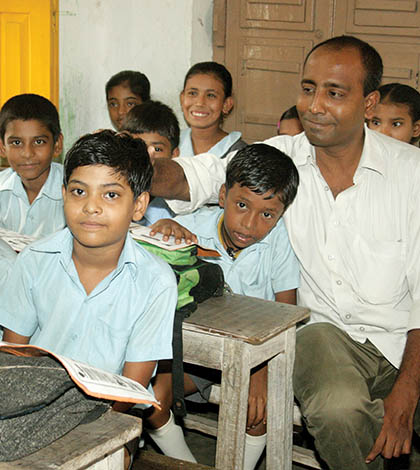
 Having been forced to quit education at an early age due to financial constraints, Mamoon Akhtar and his NGO – Samaritan Help Mission – today educate thousands of underprivileged children in the Tikiapara slums of Howrah
Having been forced to quit education at an early age due to financial constraints, Mamoon Akhtar and his NGO – Samaritan Help Mission – today educate thousands of underprivileged children in the Tikiapara slums of Howrah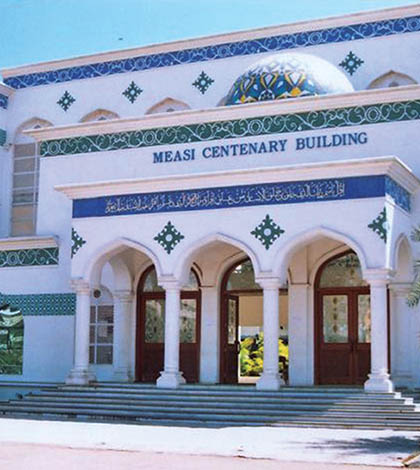
 Established 113 years ago, the MEASI Association is among the oldest groups of minority educational institutions in southern India. The management institute set up under its ambit is a standalone, co-educational Muslim minority institution that emphasises on practical applications suited to the Indian environment
Established 113 years ago, the MEASI Association is among the oldest groups of minority educational institutions in southern India. The management institute set up under its ambit is a standalone, co-educational Muslim minority institution that emphasises on practical applications suited to the Indian environment








